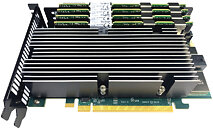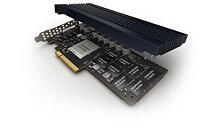
TSMC has Seven Major Customers Lined Up for its 3 nm Node
Based on media reports out of Taiwan, TSMC seems to have plenty of customers lined up for its 3 nm node, with Apple being the first customer out the gates when production starts sometime next month. However, TSMC is only expected to start the production with a mere 1,000 wafer starts a month, which seems like a very low figure, especially as this is said to remain unchanged through all of Q4. On the plus side, yields are expected to be better than the initial 5 nm node yields. Full-on mass production for the 3 nm node isn't expected to happen until the second half of 2023 and TSMC will also kick off its N3E node sometime in 2023.
Apart from Apple, major customers for the 3 nm node include AMD, Broadcom, Intel, MediaTek, NVIDIA and Qualcomm. Contrary to earlier reports by TrendForce, it appears that TSMC will continue its rollout of the 3 nm node as previously planned. Apple is expected to produce the A17 smartphone and tablet SoC, as well as advanced versions of the M2, as well as the M3 laptop and desktop processors on the 3 nm node. Intel is still said to be producing its graphics chiplets with TSMC, with the potential for GPU and FPGA products in the future. There's no word on what the other customers are planning to produce on the 3 nm node, but MediaTek and Qualcomm are obviously looking at using the node for future smartphone and tablet SoCs, with AMD and NVIDIA most likely aiming for upcoming GPUs and Broadcom for some kind of HPC related hardware.
Apart from Apple, major customers for the 3 nm node include AMD, Broadcom, Intel, MediaTek, NVIDIA and Qualcomm. Contrary to earlier reports by TrendForce, it appears that TSMC will continue its rollout of the 3 nm node as previously planned. Apple is expected to produce the A17 smartphone and tablet SoC, as well as advanced versions of the M2, as well as the M3 laptop and desktop processors on the 3 nm node. Intel is still said to be producing its graphics chiplets with TSMC, with the potential for GPU and FPGA products in the future. There's no word on what the other customers are planning to produce on the 3 nm node, but MediaTek and Qualcomm are obviously looking at using the node for future smartphone and tablet SoCs, with AMD and NVIDIA most likely aiming for upcoming GPUs and Broadcom for some kind of HPC related hardware.






































